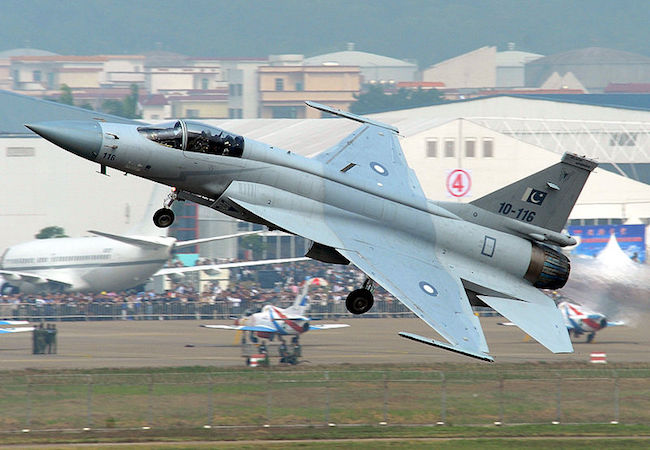
By Haris Bilal Malik
May 2020 marks the 22nd anniversary of the overt nuclearization of South Asia. The evolved nuclear doctrinal postures of both India and Pakistan have been a key component of their defence and security policies. During this period; India has undergone gradual shifts in its nuclear doctrinal posture. The Indian posture as set out in the 1999 ‘Draft Nuclear Doctrine‘ (DND) was based on an assertion that India would pursue the ‘No First Use’ (NFU) policy. The first amendment to this posture, which came out in January 2003, was based on a review by the Indian Cabinet Committee on Security (CCS) of the nuclear doctrine. It stated that if India’s armed forces or its people were attacked with chemical and biological weapons, India reserves the right to respond with nuclear weapons. This review could, therefore, be considered a contradiction to India’s declared NFU policy at the doctrinal level. On the basis of this notion, it could be assumed that India has had an aspiration to drift away from its NFU policy since 2003.
Subsequently, the notion of a preemptive ‘splendid first strike‘ has been a key part of the discourse surrounding the Indian and international strategic community since the years 2016-2017. According to this, if in India’s assessment, Pakistan was found to be deploying nuclear weapons, in a contingency, India would resort to such a splendid first strike. With such a doctrinal posture, India’s quest for preemption against Pakistan seems to be an attempt to neutralize the deterrent value of Pakistan’s nuclear capabilities. In this regard, India has been constantly advancing its nuclear weapons capabilities based on enhanced missile programs and the development of its land, sea, and air-based nuclear triad thus negating its own NFU policy. This vindicates Pakistan’s already expressed doubts over India’s long-debated NFU policy. Such Indian notion would likely serve as an overt drift towards a more offensive counterforce doctrinal posture aimed at undermining Pakistan’s deterrence posture. This would further affect the strategic stability and deterrence equilibrium in the South Asian region.
India’s rapid augmentation of its offensive doctrinal posture vis-à-vis Pakistan is based on enhancing its strategic nuclear capabilities. Under its massive military up-gradation program, India has developed the latest versions of ballistic and cruise missiles, indigenous ballistic missile defence (BMD) systems in addition to Russian made S-400, nuclear submarines, and enhanced capabilities for space weaponization. In the same vein, India’s aspiration for supersonic and hypersonic weapons is also evidence of its offensive doctrinal posture. Furthermore, India has been carrying out an extensive cruise missile development program having incredible supersonic speed along with its prospective enhanced air defence shield. Through considerable technological advancements India has shifted its approach from a counter-value to a counter-force doctrinal posture, as it demonstrates its ambitions of achieving escalation-dominance throughout the region.These technological advancements are clear indicators that India’s doctrinal posture is aimed at destabilizing the existing nuclear deterrence equilibrium in South Asia.
Pakistan, on the other hand has been threatened by India’s offensive postures and hegemonic aspirations. Consequently it has to maintain a certain balance of power to preserve its security. Pakistan’s doctrinal posture is defensive in nature and has over the years shifted from strategic deterrence to ‘full spectrum deterrence’ (FSD) by adding tactical nuclear weapons which, it claims, falls within the threshold of ‘minimum credible deterrence’. In this regard, Pakistan too has developed its missile technology based on; short, intermediate, and long-range ballistic missiles. Pakistan’s tactical range ‘Nasr’ missile is widely regarded as a ‘weapon of deterrence’ aimed at denying space for a limited war imposed by India. The induction of ‘multiple independent reentry vehicle’ (MIRV), the development of land, air and sea-launched cruise missiles and the provision of a naval-based second-strike capability have all played a significant role in the preservation of minimum credible deterrence and the assurance of full-spectrum deterrence at the strategic, operational and tactical levels.
Contrary to India’s declared NFU policy, Pakistan has never made such an assertion and has deliberately maintained a policy of ambiguity concerning a nuclear first strike against India. This has been carried out to assure its security and to preserve its sovereignty by deterring India with the employment of Full Spectrum Deterrence (FSD) within the ambit of Credible Minimum Deterrence. This posture asserts that since Pakistan’s nuclear weapons are for defensive purposes in principle, they are aimed at deterring India from any and all kinds of aggression. This has been evident from recent crisis situations as well during which Pakistan’s deterrent posture has prevented further escalation. Therefore, even now Pakistan is likely to keep its options open and still leave room for the possibility of carrying out a ‘first strike’ as a viable potential deterrent against India if any of its stated red lines are crossed.
Hence, the security dynamics of the South Asian region have changed significantly since its nuclearization in 1998. The impact of this has been substantial and irreversible on regional and extra-regional politics, the security architecture of South Asia, and the international nuclear order. As has been long evident India has held long term inspiration to become a great power. There have been continuous insinuations about the transformations in India’s nuclear doctrinal posture from ‘No First Use’ to counterforce offensive posture. The current security architecture of South Asia revolves around this Indian behavior as a nuclear state. In contrast, Pakistan’s nuclear doctrine is based solely on assuring its security, preserving its sovereignty, and deterring India by maintaining a credible deterrence posture. Based on the undeniable threats from India to its existence, Pakistan needs to further expand its doctrinal posture vis-à-vis India. This would preserve the pre-existing nuclear deterrence equilibrium and the ‘balance of power’ in the South Asian region.
Haris Bilal Malik works as a Research Associate at Strategic Vision Institute (SVI) Islamabad, Pakistan.




